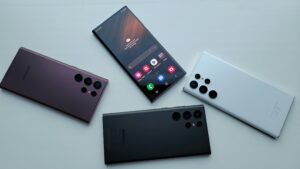In this article we explore the best smartphones for photography enthusiasts. Smartphone photography has revolutionized the way we capture moments. The days of lugging around heavy DSLRs are dwindling as smartphone cameras improve in leaps and bounds. More people are turning to their phones to snap pictures, and the results can be stunning.
One big reason for this shift is convenience. Smartphones are always in our pockets, ready to capture anything from candid moments to breathtaking landscapes. Plus, they come with a plethora of apps and tools to edit and enhance photos.
When choosing a smartphone for photography, there are key factors to keep in mind. Camera resolution is important, but isn’t everything. Lens quality, sensor size, and software enhancements play crucial roles. Some phones offer multiple lenses for different types of shots—wide-angle, macro, telephoto, you name it.
Another thing to consider is low-light performance. Many memorable moments happen when the sun goes down, so a phone with good night mode capabilities is a game-changer. Lastly, don’t overlook the ease of use and post-processing tools available. The best camera is the one you enjoy using, after all.
Contents
Top 5 Smartphones For Photography Enthusiasts
Choosing the best smartphones for photography can be a tough call. It’s not just about the number of megapixels. Let me walk you through five stellar options that blend hardware and software seamlessly to give you incredible shots.

1. **Apple iPhone 14 Pro**: Renowned for its sharp and vibrant photos, the iPhone 14 Pro features a triple-lens system with improved sensors and computational photography. Portraits and night shots are made easy with its advanced night mode and enhanced stabilization.

2. **Samsung Galaxy S22 Ultra**: With a whopping 108-megapixel main sensor and versatile camera setup, the Galaxy S22 Ultra offers staggering detail and vivid colors. It excels in low-light situations and offers excellent zoom capabilities, making it a top contender.
![]()
3. **Google Pixel 7 Pro**: Known for its exceptional software, the Pixel 7 Pro leverages Google’s AI to deliver stunning images. Its portrait mode and night sight are industry-leading, and the ease of use combined with automatic enhancements make every shot a masterpiece.

4. **Sony Xperia 1 IV**: Geared towards serious photographers, the Xperia 1 IV offers a professional-grade experience with its continuous optical zoom and high-resolution sensors. Its manual controls allow for fine-tuning, giving you unparalleled creative freedom.

5. **OnePlus 10 Pro**: Balancing quality and affordability, the OnePlus 10 Pro’s Hasselblad partnership results in true-to-life color reproduction and impressive dynamic range. Its varied lens options and robust editing tools make it a strong choice for enthusiasts.
Each of these smartphones brings something unique to the table. Whether you prioritize ease of use, low-light performance, or manual control, there’s a perfect option among these top-tier devices.
Comparative Analysis
Let’s break down how these top smartphones stack up against each other when it comes to their camera features and overall performance in different photography scenarios.
**Camera Features**: Each phone boasts unique strengths. The iPhone 14 Pro stands out with its seamless integration of hardware and software, ensuring quick and reliable snaps. The Galaxy S22 Ultra’s high megapixel count offers unmatched detail. Pixel 7 Pro relies on Google’s AI for impressive automated photo enhancements. Xperia 1 IV caters to the manual control enthusiasts, while OnePlus 10 Pro shines with its Hasselblad collaboration for accurate colors.
**Low-Light Performance**: When the sun goes down, performance varies. The iPhone 14 Pro’s enhanced night mode captures bright, clear images. Samsung’s Galaxy S22 Ultra excels with its advanced sensor technology, reducing noise in low-light environments. The Pixel 7 Pro’s Night Sight is a favorite for capturing fine details in dark scenes. Xperia 1 IV does well but requires manual adjustments for best results. OnePlus 10 Pro holds its own, balancing cost and low-light capability effectively.
**Versatility**: Wide-angle, macro, and zoom capabilities should be considered. Samsung’s S22 Ultra covers a broad spectrum with its 108MP sensor and periscope zoom. The iPhone 14 Pro offers excellent wide-angle shots and telephoto options. Pixel 7 Pro is remarkable for portraits and everyday shots with its simple interface. Xperia 1 IV provides professional-grade zoom, and OnePlus 10 Pro balances varied lens options with user-friendly features.
**User Experience**: Ease of use and overall experience can make or break your choice. Apple’s iPhone 14 Pro is known for its intuitive interface and seamless ecosystem. The Galaxy S22 Ultra, while packed with features, might feel overwhelming to some. Google’s Pixel 7 Pro is the easiest to use with stellar software integration. Xperia 1 IV offers a more professional feel with its manual controls. OnePlus 10 Pro strikes a good balance between simplicity and advanced features.
Making Your Decision
Picking the right smartphone for your photography needs is all about matching the device’s strengths to your priorities and shooting style. Start by identifying what matters most to you. Do you often shoot in low-light conditions? Look for a phone with exceptional night mode features. Are you a fan of wide-angle shots or portrait photography? Choose a device that excels in these areas.
If you’re after a well-rounded performer, the iPhone 14 Pro and Galaxy S22 Ultra offer a balanced mix of quality, ease of use, and versatility. For those passionate about creative control and manual settings, the Xperia 1 IV provides a near-professional experience. The Pixel 7 Pro is perfect for users who appreciate simple yet powerful software-driven photography. Meanwhile, the OnePlus 10 Pro is ideal if you want strong performance without breaking the bank.
Once you choose a phone, make sure you explore its full potential. Familiarize yourself with the camera’s settings and features. Experiment with different modes and lenses to see what works best for your style. Utilize built-in editing tools or third-party apps to enhance your photos further. Remember, volume matters—shoot often and analyze your results to keep improving.
Looking ahead, the future of smartphone photography is bright. Advances in AI, sensor technology, and software mean that the gap between smartphone cameras and traditional cameras continues to shrink. Keeping an eye on upcoming releases and updates can help you stay ahead of the curve and ensure that you’re always capturing the best possible images.





